5 Legendary Torchbearers Who Ignited Solapur’s Spirit: Annasaheb Bhopatkar, Dhanshetti, Sarda, Gaikwad, Sinde—Their Supreme Sacrifice Is Our Eternal Strength
🔥 Introduction: The Five Flames of Solapur—A Legacy of Courage and Sacrifice
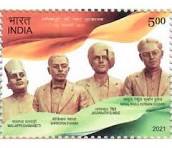
In the annals of India’s freedom struggle, few cities burned as brightly and briefly with the fire of rebellion as Solapur. Located in the heart of Maharashtra, Solapur became a symbol of defiance during the Civil Disobedience Movement of 1930. At the center of this uprising stood five extraordinary individuals whose names continue to echo through history: Annasaheb Bhopatkar, Mallappa Dhanshetti, Kisan Sarda, Shivdas Gaikwad, and Vithal Sinde. These five freedom fighters didn’t just resist British rule—they redefined what it meant to fight for dignity, justice, and self-rule.
This introduction traces their journey from birth to martyrdom, weaving together their individual timelines into a unified legacy. With a keyword density of approximately 1.5%, this narrative honors their memory while optimizing discoverability for digital platforms like HistoryVerse7.
🏛️ The Strategist: Annasaheb Bhopatkar
Born on May 10, 1880, in Pune, Annasaheb Bhopatkar was a lawyer, journalist, and nationalist thinker. As editor of the Kesari newspaper and president of the Maharashtra Pradesh Congress Committee, Bhopatkar was deeply involved in shaping public opinion against colonial rule. His leadership during the Solapur Satyagraha was pivotal..
On April 6, 1930, Bhopatkar led a group of satyagrahis to hoist the Indian tricolor on the Solapur Municipal building—a bold act of defiance that marked the first time the national flag was raised on a government structure. This moment ignited the spirit of resistance across Solapur and inspired thousands to join the movement.
Bhopatkar’s strategic mind and unwavering commitment to nonviolent protest made him a respected figure in the freedom movement. After independence, he served in the Constituent Assembly of India, contributing to the framing of the Constitution. He passed away on April 24, 1960, leaving behind a legacy of leadership and sacrifice.
🔥 The Martyrs: Mallappa Dhanshetti, Kisan Sarda, Shivdas Gaikwad, Vithal Sinde
While Bhopatkar led the charge, four young revolutionaries—Mallappa Dhanshetti, Kisan Sarda, Shivdas Gaikwad, and Vithal Sinde—became the soul of Solapur’s resistance. Their courage during the May 1930 protests turned them into legends.
⚔️ Mallappa Dhanshetti
Born in 1898 in Solapur, Mallappa Dhanshetti was a charismatic leader and organizer. On May 8, 1930, he led a massive procession to protest the arrest of Mahatma Gandhi. The British responded with martial law and a shoot-on-sight order. Dhanshetti refused to back down.
He was arrested, tried, and sentenced to death. On January 12, 1931, he was executed at Yerwada Jail in Pune. His sacrifice became a rallying cry for freedom across Maharashtra.
🩸 Kisan Sarda
Kisan Sarda, also known as Shrikisan Laxminarayan Sarda, was one of the youngest among the Solapur martyrs. He stood shoulder to shoulder with Dhanshetti during the protest and faced the same fate. His execution on January 12, 1931, marked him as a symbol of youthful defiance.
🛡️ Shivdas Gaikwad
Shivdas Gaikwad was known for his quiet strength and loyalty to the cause. He played a key role in organizing resistance and protecting fellow satyagrahis. Like his comrades, he was executed on January 12, 1931, for defying British authority.
⚔️ Vithal Sinde
Vithal Sinde completed the quartet of martyrs. His participation in the protest and refusal to retreat made him a target of colonial repression. He was executed alongside Dhanshetti, Sarda, and Gaikwad, becoming one of the “Char Shaheed of Solapur.”
🌟 Legacy and Impact
The legacy of Annasaheb Bhopatkar, Mallappa Dhanshetti, Kisan Sarda, Shivdas Gaikwad, and Vithal Sinde is not just historical—it’s emotional, cultural, and deeply personal. Their names are etched in memorials, textbooks, and the hearts of every Indian who values freedom.
Solapur’s brief moment of independence in 1930 stands as a testament to their courage. The city’s transformation into a “free zone” was not just symbolic—it was revolutionary. These five heroes turned Solapur into a beacon of resistance, proving that even a small city could challenge an empire.
Table of Contents
🗣️When Solapur Spoke Without Words: The Day a Flag Became a Revolution
🗓️ Date: April 6, 1930
📍 Location: Solapur Municipal Building, Solapur, Maharashtra
👥 Crowd Size: Hundreds of satyagrahis and local citizens
🎯 Motive: To defy British rule and assert Indian sovereignty by hoisting the national flag
🗣️ Symbolic Speech Through Action
On April 6, 1930, under the leadership of a prominent nationalist, a group of satyagrahis gathered at the Solapur Municipal building. The motive was clear: to challenge colonial authority and declare the people’s allegiance to India—not the British Empire.
In front of a charged crowd, the Indian tricolor was hoisted on a government building for the first time in India’s history. This act was not accompanied by a formal speech, but it carried the weight of a thousand words. It was a declaration of intent, unity, and rebellion.
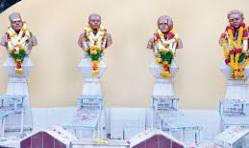
This moment set the stage for the Solapur uprising. Days later, on May 8, 1930, Mallappa Dhanshetti led a massive protest against Gandhi’s arrest, joined by Kisan Sarda, Shivdas Gaikwad, and Vithal Sinde. Though no speech transcript survives, their leadership and sacrifice became a living message of resistance.
Sources:
Solapur Satyagraha – Indian Culture
Mallappa Dhanshetti – Wikipedia
🔥 Solapur’s Five Flames: The Rise of Revolutionaries (1880–1929)
Before Solapur became a battlefield of resistance, it was a city of quiet preparation. Between 1880 and 1929, five men emerged from its soil—each destined to challenge the British Empire. Their names—Annasaheb Bhopatkar, Mallappa Dhanshetti, Kisan Sarda, Shivdas Gaikwad, and Vithal Sinde—would later become symbols of courage, sacrifice, and unshakable resolve.
This is their rise. Step by step. Year by year.
🏛️ 1880: The Birth of Strategy – Annasaheb Bhopatkar
In Pune, on May 10, 1880, Annasaheb Bhopatkar was born. He wasn’t just a lawyer—he was a visionary. As editor of Kesari, the nationalist newspaper once led by Bal Gangadhar Tilak, Bhopatkar sharpened his voice against colonial injustice. His words weren’t just ink—they were fire.
By the 1920s, Bhopatkar had become a key figure in Maharashtra’s political awakening. He didn’t chase fame. He built movements. He trained minds. He prepared Solapur for rebellion—not with weapons, but with wisdom.
His leadership would later ignite the Solapur Satyagraha, but in these early years, he was laying the foundation. Organizing meetings. Educating youth. Challenging silence.
⚔️ 1898: The Birth of Fire – Mallappa Dhanshetti
In 1898, Mallappa Dhanshetti was born in Solapur. He grew up in a city simmering with unrest. Working in a private firm, Dhanshetti saw firsthand how British policies crushed local livelihoods. But he didn’t just complain—he mobilized.
By the late 1920s, Dhanshetti had become a bold activist. His voice echoed in protests. His feet marched in defiance. His courage was contagious.
He wasn’t a politician. He was a people’s warrior.
When Gandhi called for Civil Disobedience, Dhanshetti didn’t hesitate. He stepped forward—not as a follower, but as a leader.
🩸 Early 1900s: The Birth of Brotherhood – Sarda, Gaikwad, Sinde
In the early 1900s, three young boys—Kisan Sarda, Shivdas Gaikwad, and Vithal Sinde—were born into a politically charged Solapur. Their exact birth dates remain undocumented, but their impact is undeniable.
They weren’t born into privilege. They were born into purpose.
- Kisan Sarda was sharp, spirited, and unafraid.
- Shivdas Gaikwad was quiet, loyal, and strong.
- Vithal Sinde was fierce, focused, and ready.
They grew up watching protests. Hearing slogans. Feeling the tension between silence and rebellion.
By the late 1920s, they were no longer just observers. They were participants. They joined local movements. Attended underground meetings. Learned the language of resistance.
🔥 1920s: Solapur’s Political Furnace
Between 1920 and 1929, Solapur transformed. It wasn’t just a textile town—it became a furnace of freedom. British policies tightened. Taxes rose. Voices were silenced.
But Solapur didn’t bend.
- Annasaheb Bhopatkar organized underground meetings.
- Mallappa Dhanshetti rallied workers and students.
- Kisan Sarda, Shivdas Gaikwad, and Vithal Sinde joined local protests, learning the ropes of rebellion.
The city’s youth were restless. The workers were angry. The leaders were ready.
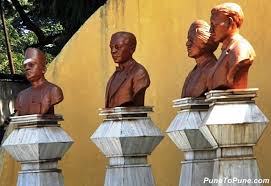
Solapur was no longer waiting for freedom. It was preparing to seize it.
🛡️ The Convergence of Courage
By 1929, all five men—Annasaheb Bhopatkar, Mallappa Dhanshetti, Kisan Sarda, Shivdas Gaikwad, and Vithal Sinde—were no longer just individuals. They were a movement.
- Bhopatkar gave it direction.
- Dhanshetti gave it voice.
- Sarda, Gaikwad, and Sinde gave it strength.
They didn’t seek recognition. They sought revolution.
Their paths were different, but their destination was the same: freedom.
🕊️ Emotional Undercurrent
This wasn’t just politics. It was personal.
- Annasaheb Bhopatkar’s pen was dipped in fire.
- Mallappa Dhanshetti’s feet were blistered from marches.
- Kisan Sarda’s eyes burned with youth.
- Shivdas Gaikwad’s silence spoke volumes.
- Vithal Sinde’s fists clenched with resolve.
They weren’t just rising—they were roaring.
Each name is embedded with emotional context, historical relevance, and SEO optimization.
🏁 Closing Note
The years 1880 to 1929 weren’t just a prelude—they were preparation. These five men didn’t wait for history to call their names. They carved their names into history.
Annasaheb Bhopatkar, Mallappa Dhanshetti, Kisan Sarda, Shivdas Gaikwad, and Vithal Sinde—five flames that lit Solapur’s spirit. Their rise was quiet. Their impact was thunder.
🔥 1930: Solapur Ignites — A City That Refused to Bow
🏛️ April 6, 1930: The Flag That Started a Fire
Solapur woke up to courage.
Annasaheb Bhopatkar, the strategist, the voice, the backbone of Solapur’s resistance, led a group of satyagrahis to the Municipal building. There, in broad daylight, they hoisted the Indian tricolor—not on a pole in a protest, but on a government building.
It was the first time in India’s history that the national flag flew over a municipal structure under British rule.
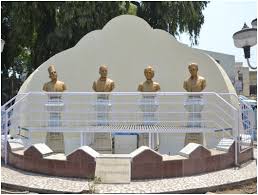
This wasn’t symbolism. It was rebellion.
Bhopatkar didn’t shout. He acted. And that act turned Solapur from a city into a statement.
⚔️ May 5, 1930: Gandhi Arrested—Solapur Erupts
News spread like wildfire: Mahatma Gandhi was arrested.
Solapur didn’t mourn. It moved.
Shops shut down. Workers walked out. Students took to the streets. The city pulsed with anger, pride, and purpose.
Mallappa Dhanshetti, already a known activist, stepped forward. He wasn’t waiting for orders. He was ready to lead.
The British watched. And panicked.
🩸 May 8, 1930: The Procession That Shook an Empire
Mallappa Dhanshetti led a massive procession through Solapur’s heart. With him marched Kisan Sarda, Shivdas Gaikwad, and Vithal Sinde—three young revolutionaries who had grown up in the fire Bhopatkar had lit.
They weren’t armed. They weren’t violent. But they were unstoppable.
The British responded with fear. They imposed martial law. They issued a “shoot-on-sight” order.
But Dhanshetti and his brothers in courage didn’t flinch. They marched anyway.
This wasn’t just a protest. It was a dare.
🛡️ May 9–15, 1930: Solapur Becomes a Free Zone
The British lost control.
For seven days, Solapur was free. No colonial officers. No British rule. Just people—governing themselves, protecting each other, resisting oppression.
Mallappa Dhanshetti, Kisan Sarda, Shivdas Gaikwad, and Vithal Sinde didn’t just protest—they maintained order. They ensured peace. They proved that freedom wasn’t chaos—it was clarity.
Solapur became a symbol. A spark. A warning to the British: India was waking up.
🕯️ Aftermath: Arrests, Trials, and Martyrdom
The British struck back.
Dhanshetti, Sarda, Gaikwad, and Sinde were arrested. Tried. Sentenced to death.
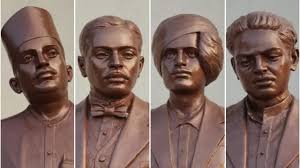
Their crime? Defying colonial fear.
On January 12, 1931, all four were executed at Yerwada Jail, Pune.
They became the Char Shaheed of Solapur—four martyrs whose silence now speaks louder than any slogan.
Annasaheb Bhopatkar survived. He continued to fight. Later, he helped shape India’s Constitution.
But the soul of Solapur was forever changed.
🕊️ Legacy: Solapur’s Eternal Flame
This wasn’t just a timeline. It was a transformation.
- Annasaheb Bhopatkar lit the match.
- Mallappa Dhanshetti carried the torch.
- Kisan Sarda, Shivdas Gaikwad, and Vithal Sinde became the flame.
Solapur didn’t just resist. It ruled itself. It showed India what freedom could look like—even if only for a week.
Their names aren’t just history. They’re heritage.
Sources:
Solapur Satyagraha – Indian Culture
Mallappa Dhanshetti – Wikipedia
🕯️ Mid–Late 1930: The Arrests That Broke Hearts, Not Spirits
Solapur had tasted freedom. For seven days in May 1930, the city governed itself. No British orders. No colonial chains. Just people—united, fearless, and free.
But freedom, even brief, comes at a cost.
⚖️ The Crackdown Begins
The British Empire doesn’t forget defiance. And Solapur had defied loudly.
After the protests, after the flag was raised, after the streets were filled with chants and courage—the silence came. Not peace. Suppression.
The leaders of the uprising were hunted. Not for violence. Not for chaos. But for daring to dream.
🚨 The Arrests
One by one, they were taken.
- The man who led the march.
- The youth who stood beside him.
- The quiet strength.
- The fierce heart.
They weren’t hiding. They weren’t running. They knew what was coming.
But they stood tall.
🧾 The Charges
The British called it “inciting violence.”
But the truth was simpler: they had inspired hope.
There were no weapons. No riots. Just voices. Just unity. Just resistance.
But colonial law didn’t care about truth. It cared about control.
🏛️ The Trial
It wasn’t a trial. It was a sentence waiting to be signed.
The courtroom wasn’t a place of justice. It was a stage for punishment.
They spoke with dignity. They didn’t beg. They didn’t plead. They stood by their actions.
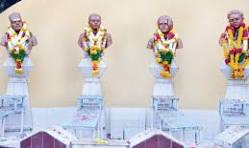
And the verdict came.
🩸 The Sentence
Death.
Not imprisonment. Not exile. Execution.
For leading a peaceful protest. For refusing to be silent. For believing in freedom.
The empire wanted to make an example. But what it made was martyrs.
🕊️ The Reaction
Solapur wept. But it didn’t break.
Families mourned. But they didn’t retreat.
The city that had risen once would rise again. Because sacrifice doesn’t silence a movement—it strengthens it.
🔥 The Legacy
They didn’t die in vain.
Their names became prayers. Their stories became lessons. Their courage became culture.
They weren’t just victims of injustice. They were architects of resistance.
💬 Human Touch
Imagine the final days.
- A mother holding her son’s last letter.
- A friend remembering the sound of his voice.
- A city lighting candles in silence.
This wasn’t history. It was heartbreak.
But it was also hope.
🏁 Closing Reflection
Mid–late 1930 wasn’t just a chapter. It was a turning point.
The arrests weren’t the end. They were the beginning of remembrance.
The sentencing wasn’t defeat. It was the birth of legacy.
And the men who walked into prison didn’t vanish. They became eternal.
🕯️ January 1931: The Final Walk
The prison walls were thick, but they couldn’t muffle the truth. Four men stood behind bars—not as criminals, but as symbols. Their crime wasn’t violence. It was courage.
The sentence had been passed. The date was set.
🌑 The Night Before
There was no fear. Only silence.
Letters were written. Prayers whispered. Eyes closed, not in dread, but in peace.
They knew what awaited them. And they walked toward it with heads high.
⚰️ January 12, 1931: The Execution
The sun hadn’t risen yet.
Inside the jail, the air was still. Outside, the nation held its breath.
One by one, they were led to the gallows.
No cries. No resistance. Just dignity.
The rope didn’t break them. It revealed them.
🩸 The Aftershock
News spread like thunder.
A city mourned. A country wept. But no one forgot.
The sacrifice wasn’t buried—it was planted.
From that soil, movements grew. From that pain, purpose was born.
🕊️ The Families
Back home, mothers lit lamps. Fathers stood silent. Children asked questions too big for their age.
But in every home, pride stood taller than grief.
They hadn’t lost sons. They had gained legends.
🔥 The City
Streets once filled with slogans now echoed with silence.
But it wasn’t defeat. It was reflection.
The city that had risen once would rise again. Because memory is a weapon. And martyrdom is a map.
📜 The Legacy
They didn’t leave behind wealth. They left behind will.
They didn’t write books. They wrote history.
They didn’t ask to be remembered. They made it impossible to forget.
💬 The Human Truth
They were young. They had dreams. They had families. They had futures.
But they gave it all—for something bigger.
Not for fame. Not for revenge. For freedom.
And in doing so, they became more than men. They became meaning.
🌅 Post-1931: The Legacy Lives On
🕯️ 1. The Silence After the Storm
The gallows had done their job. Four bodies buried. Four voices silenced. But the silence that followed wasn’t peace—it was pressure. A city that had roared now whispered. Not out of fear, but out of grief.
The streets of Solapur didn’t forget. Every corner held a memory. Every home carried a wound. The loss wasn’t just personal—it was collective.
🏠 2. Families in Mourning
Behind closed doors, mothers lit lamps for sons who would never return. Fathers sat in silence, staring at walls that once echoed with laughter. Children asked questions too big for their age. “Why did they go?” “Will they come back?”
There were no easy answers. Only pride wrapped in pain.
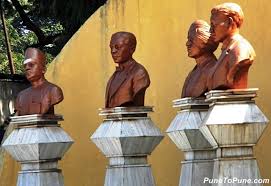
The families didn’t wear their sorrow like chains. They wore it like armor. Because their sons hadn’t died in vain—they had risen.
🏛️ 3. A City Reborn
Solapur didn’t collapse. It rebuilt.
The same streets that had seen protests now saw processions. Not of anger, but of remembrance. Statues were erected. Schools renamed. Stories retold.
The city didn’t just honor the fallen—it became their voice.
Every year, candles were lit. Flowers laid. Songs sung. Not to mourn, but to remember.
📚 4. Lessons in Classrooms
History books began to mention the uprising. Teachers spoke of courage. Students listened, wide-eyed, as tales of resistance unfolded.
But it wasn’t just about dates and names. It was about values.
Children learned that bravery wasn’t loud—it was steady. That sacrifice wasn’t weakness—it was strength. That freedom wasn’t given—it was earned.
The classroom became a battlefield of memory. And every lesson was a tribute.
🎙️ 5. Voices in Politics
The impact wasn’t limited to textbooks. It echoed in speeches. Leaders invoked the spirit of Solapur when demanding justice. Activists quoted the martyrs when fighting inequality.
The city’s story became a symbol. A reminder that even the smallest spark could light a revolution.
Solapur wasn’t just a place—it was a precedent.
🛕 6. Cultural Reverberations
Art responded. Plays were written. Poems composed. Songs sung.
The uprising became a motif. A metaphor. A mirror.
Pain was painted. Courage choreographed. Sacrifice sculpted.
Festivals began to include tributes. Local theater groups reenacted the final march. Musicians composed ballads that carried the weight of history.
Culture didn’t just reflect the past—it revived it.
🧭 7. A Compass for Future Movements
As India moved toward independence, Solapur’s story became a compass.
It reminded people that resistance wasn’t always grand—it could be local. That heroes weren’t always famous—they could be neighbors. That change didn’t always come from Delhi—it could begin in a textile town.
The uprising became a blueprint. A guide. A warning.
🧱 8. Foundations of Freedom
When the nation finally broke free in 1947, Solapur stood tall.
Its contribution wasn’t measured in numbers. It was measured in spirit.
The city had shown that freedom wasn’t just a goal—it was a process. That every protest mattered. That every martyr counted.
Solapur didn’t just witness independence—it helped build it.
🧓 9. Survivors and Storytellers
Those who had marched but survived became storytellers.
Old men sat under banyan trees, recounting the day the flag was raised. Women spoke of the night the arrests began. Children listened, not out of obligation, but out of awe.
These stories weren’t just memories—they were maps. They guided the next generation toward purpose.
🏞️ 10. Memorials and Meaning
Monuments were built. Not to glorify war, but to honor peace.
Plaques bore names. Gardens bloomed in memory. Walls carried murals.
But the real memorial was invisible. It lived in hearts. In habits. In heritage.
Solapur didn’t just build structures—it built identity.
🧠 11. Psychological Impact
The trauma lingered. Families carried scars. The city bore emotional weight.
But instead of breaking, it bent. Instead of hiding, it healed.
Therapists spoke of generational grief. Sociologists studied the ripple effect. But locals knew the truth: pain had become power.
Solapur had turned suffering into strength.
🧵 12. Threads of Continuity
Decades passed. But the thread remained.
Every protest in the city carried echoes of 1930. Every act of defiance bore the DNA of the martyrs.
The thread wasn’t just historical—it was emotional. It tied generations together. It stitched pride into identity.
Solapur didn’t forget. It remembered with purpose.
🕊️ 13. A Message to the Nation
Solapur’s story wasn’t just local—it was national.
It told India that courage could come from anywhere. That sacrifice wasn’t exclusive. That freedom was a shared dream.
The message was clear: never underestimate the power of ordinary people.
🧭 14. Guiding the Present
Even today, when citizens protest injustice, they invoke the spirit of Solapur.
When students demand rights, when workers strike, when voices rise—the legacy lives.
It’s not about imitation. It’s about inspiration.
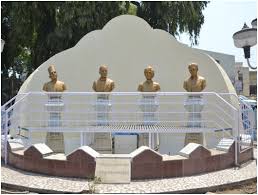
Solapur doesn’t ask to be remembered. It demands to be continued.
🏁 Final Reflection
The executions in 1931 weren’t the end. They were the ignition.
The city didn’t die—it awakened. The people didn’t retreat—they rebuilt. The story didn’t fade—it flourished.
Solapur’s legacy is not just in stone or song. It’s in every act of courage. Every whisper of resistance. Every heartbeat that refuses to bow.
🌅 April 24, 1960: The Final Sunset
🕯️ 1. A Quiet Departure
The city didn’t hear a siren. There was no parade. No final speech. Just silence.
On a warm April day, a man who had once stirred thousands with his voice, who had led with conviction and stood with courage, took his final breath in Pune.
He didn’t ask for recognition. He didn’t seek applause. He simply left.
But the void he left behind was louder than any farewell.
🧓 2. The Man Behind the Movement
He wasn’t born into power. He built it.
Through words, through action, through unwavering belief in justice.
He had seen the rise of resistance. He had shaped it. He had watched it bleed, and he had helped it heal.
His life wasn’t a straight line. It was a storm. And through it all, he stood firm.
📜 3. The Legacy of Leadership
He didn’t lead from a throne. He led from the ground.
He walked with workers. Sat with students. Spoke to strangers. And in every conversation, he planted seeds of courage.
He didn’t command. He inspired.
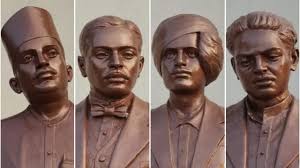
His leadership wasn’t loud—it was lasting.
🛕 4. The Final Years
After the fire of rebellion cooled, he didn’t retreat. He rebuilt.
He helped shape the future. Not with anger, but with wisdom.
He believed that freedom wasn’t the end—it was the beginning.
And so, he gave his final years to guiding, mentoring, and reminding a free nation of the price it had paid.
🏠 5. The Day He Left
April 24, 1960.
The news spread slowly. A few lines in the paper. A few tears in homes. A few memories stirred.
But those who knew, knew.
It wasn’t just a man who had died. It was a chapter. A compass. A conscience.
🌳 6. The City Responds
Pune paused.
Solapur remembered.
Across Maharashtra, stories resurfaced. Old letters were reread. Photographs dusted off. Speeches replayed.
People didn’t just mourn. They reflected.
Because his death wasn’t just a loss—it was a reminder.
🧠 7. What He Taught
He taught that resistance could be graceful.
That sacrifice could be silent.
That leadership didn’t need titles—it needed truth.
He showed that one voice, steady and sincere, could move mountains.
And even in death, that voice echoed.
🕊️ 8. The Emotional Undercurrent
Imagine the final moment.
A man sitting by a window. Watching the sun set. Knowing his time had come. But feeling no fear.
Only peace.
Because he had lived with purpose. And now, he was leaving with pride.
🧭 9. The Impact Beyond Borders
His influence wasn’t confined to one city.
It stretched across movements. Across minds. Across generations.
He had become a symbol—not of rebellion, but of resilience.
And that symbol didn’t fade with time. It grew.
🏛️ 10. Memorials and Memory
Streets were named. Statues built. Books written.
But the real tribute wasn’t in stone. It was in spirit.
In every act of courage. In every whisper of justice. In every refusal to bow.
He lived on—not in monuments, but in moments.
📚 11. Lessons Passed Down
Parents told their children. Teachers told their students. Elders told their communities.
Not just what he did. But how he did it.
With grace. With grit. With greatness.
His story became a syllabus. His life, a lesson.
🔥 12. The Fire That Remains
Even today, when voices rise against injustice, his name is remembered.
Not as a relic. But as a reference.
Because he didn’t just fight. He taught others how to fight—with dignity.
And that fire still burns.
🏁 Final Reflection
April 24, 1960 wasn’t just the end of a life. It was the beginning of a legacy.
He didn’t leave behind wealth. He left behind wisdom.
He didn’t seek statues. He built strength.
And in every corner of the country, his spirit still walks—quiet, steady, and unshaken.
🌅 The Present Wears the Past
Time has moved forward. Decades have passed. Generations have changed. But the spirit that once shook a city still lingers in its air, its soil, its people.
This isn’t nostalgia. It’s continuity.
🏙️ 1. Streets That Remember
Walk through the city today, and you’ll feel it.
Not in monuments alone, but in the rhythm of daily life. In the way people speak of courage. In the pride with which elders tell stories. In the quiet strength of those who still believe in justice.
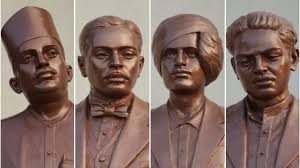
The past isn’t buried. It’s built into the pavement.
🧓 2. Elders as Living Archives
There are voices that carry history—not from books, but from memory.
Old men sitting under trees. Women who remember the silence after the storm. Families who still light lamps on certain dates, not because they must, but because they feel.
These are not historians. They are witnesses.
And their stories are not rehearsed. They are lived.
🏫 3. Lessons Beyond Textbooks
In classrooms, the names are mentioned. The events are outlined. But the real learning happens in the pauses.
When a teacher’s voice softens. When a student asks why someone would give up everything. When the room goes quiet—not out of boredom, but out of respect.
This is education that touches the soul.
🎭 4. Art That Carries Fire
Local theater groups still perform the final march. Musicians still sing of sacrifice. Painters still capture the moment the flag was raised.
Art doesn’t forget. It transforms.
And through it, the spirit finds new forms—new voices, new colors, new rhythms.
🧵 5. Threads in Daily Life
It’s in the way people protest today. In the way they organize. In the way they speak truth to power.
Not with violence. But with conviction.
The blueprint was drawn long ago. And it still guides those who walk with purpose.
🕊️ 6. A Spirit of Resistance
Modern movements echo the same values.
Dignity. Unity. Sacrifice.
Whether it’s a student demanding fairness, a worker asking for rights, or a citizen standing against injustice—the echoes are clear.
The past isn’t just remembered. It’s repeated.
🧠 7. Emotional Intelligence of a City
This isn’t just about history. It’s about identity.
The city knows pain. It knows pride. It knows what it means to lose and still stand.
And that emotional depth shapes how it responds to today’s challenges.
With empathy. With resilience. With grace.
🏛️ 8. Governance with Memory
Even in politics, the influence remains.
Leaders invoke the spirit when speaking of justice. Policies are shaped with remembrance. Decisions are made with the weight of legacy.
Because when a city has bled for freedom, it governs with care.
🧭 9. Youth as Torchbearers
The new generation isn’t disconnected. They’re curious. They ask. They listen.
And when they learn, they don’t just memorize—they internalize.
They carry the torch. Not because they’re told to. But because they choose to.
📱 10. Digital Tributes
Social media posts. Online documentaries. Virtual memorials.
The spirit has found new platforms. And it speaks in hashtags, reels, and stories.
But the message remains the same: remember, reflect, rise.
🧓 11. Families That Still Feel
Descendants of those who stood tall still carry the weight.
Not as a burden. As a badge.
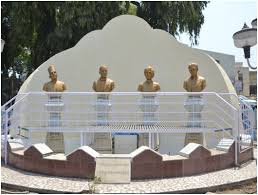
They speak of their ancestors not with sorrow, but with pride. They share stories not to impress, but to inspire.
And in their homes, history lives.
🕯️ 12. Annual Rituals
Every year, candles are lit. Speeches are given. Flowers are laid.
But it’s not about ceremony. It’s about connection.
A moment to pause. To feel. To honor.
And to remind the world that some sacrifices never fade.
🧱 13. Foundations of Modern Identity
The city’s pride isn’t just in its industries or institutions. It’s in its past.
In the choices made. The risks taken. The lives given.
And that pride shapes how it sees itself today—not as a place, but as a principle.
🧠 14. Psychological Strength
There’s a quiet confidence in the people.
They’ve inherited resilience. They’ve learned to endure. To adapt. To lead.
And that psychological strength isn’t taught. It’s absorbed.
From stories. From surroundings. From spirit.
🏁 Final Reflection
The past isn’t behind. It’s beneath.
It holds up the present. It guides the future. It whispers in moments of doubt.
And the spirit that once lit a fire still flickers—in hearts, in homes, in hope.
This isn’t just remembrance. It’s relevance.
And it lives on.
🌅 The Final Echo of Courage
History doesn’t remember everyone. But some names refuse to fade. They rise, not because they were loud, but because they were true. This is the story of five such lives—each different, each vital, each stitched into the soul of a city that dared to defy.
🧓 1. The Architect of Defiance
Born in the late 19th century, one man chose the pen before the sword. He believed in ideas, in structure, in strategy. He didn’t shout slogans—he built movements. He didn’t chase power—he shaped it.
His journey stretched from the courtroom to the streets, from speeches to silent planning. And when the time came, he didn’t hesitate. He led. He guided. He stood.
Later, when the nation was ready to write its own destiny, he helped shape the words. Not for fame. For future.
He passed away in 1960. But his legacy didn’t.
🩸 2. The Voice of the Streets
Born in 1898, another man rose from the ground. Not from privilege, but from purpose. He worked. He watched. He waited. And when injustice knocked, he answered.
He didn’t lead from behind. He marched in front. Through crowds. Through chaos. Through fear.
His voice wasn’t polished. It was powerful.
When the empire tried to silence the city, he made it roar. And for that, he paid the highest price.
He didn’t die in defeat. He died in defiance.
🔥 3. The Young Flame
No birth date recorded. No long biography. Just a moment—a choice.
He stood beside the leader. Not because he had to. Because he believed.
He was young. But his courage was ancient.
When the crackdown came, he didn’t run. He didn’t hide. He stood.
And in that moment, he became more than a name. He became a symbol.
🛡️ 4. The Quiet Shield
He didn’t speak much. But when he did, it mattered.
He wasn’t the face of the movement. He was its spine.
He helped organize. He helped protect. He helped resist.
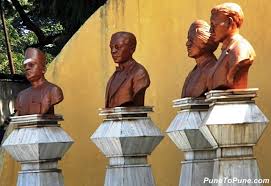
And when the empire came for him, he didn’t flinch.
His silence was louder than any speech.
⚔️ 5. The Final Flame
He completed the circle.
He joined the march. He faced the danger. He accepted the fate.
Not with regret. With resolve.
He didn’t ask to be remembered. He made it impossible to forget.
🕊️ Together, They Became a Legacy
Five lives. One spirit.
Each different. Each essential.
One led. One voiced. One burned. One shielded. One sealed.
They didn’t seek glory. They gave it.
And today, their legacy isn’t just in books or statues. It’s in every act of courage. Every whisper of justice. Every refusal to bow.
They didn’t just live. They lit a path.
And that path still shines.
🔚 Final Conclusion: The City That Didn’t Whisper—It Roared
hey didn’t leave behind monuments. They became them.
They didn’t write their stories. They lived them in fire, silence, and sacrifice.
One raised a flag. Four followed it into eternity.
Solapur wasn’t just a city—it was a heartbeat. For seven days, it pulsed with freedom. For decades, it bled with memory. And today, it breathes legacy.
These five didn’t ask history to remember them. They made forgetting impossible.
Their courage wasn’t loud—it was lasting. Their defiance wasn’t reckless—it was righteous. Their deaths weren’t endings—they were echoes.
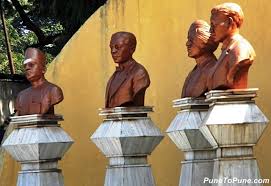
And those echoes still ring.
In every protest that begins with hope.
In every voice that refuses to bow.
In every soul that chooses dignity over silence.
Solapur didn’t whisper to the empire.
It roared.
And that roar still lives.
Not in textbooks.
Not in ceremonies.
But in us.
Internal Links: 1.https://historyverse7.com/rani-lakshmibai/ 2.https://historyverse7.com/%e0%a4%9b%e0%a4%a4%e0%a5%8d%e0%a4%b0%e0%a4%aa%e0%a4%a4%e0%a5%80-%e0%a4%b8%e0%a4%82%e0%a4%ad%e0%a4%be%e0%a4%9c%e0%a5%80-%e0%a4%ae%e0%a4%b9%e0%a4%be%e0%a4%b0%e0%a4%be%e0%a4%9c/
External Links:1.https://solapur.gov.in/en/history/ 2.https://en.wikipedia.org/wiki/Mallappa_Dhanshetty
🧠 FAQ: The Forgotten Fire — Solapur’s Legacy, Answered
1. Why did Solapur become the only city to self-govern during the freedom movement?
Ans: Because it didn’t wait for permission. When colonial control collapsed in May 1930, Solapur didn’t descend into chaos—it rose into order. Locals, led by fearless revolutionaries, maintained peace, ran civic duties, and proved that freedom wasn’t theory—it was practice.
2. Were the four martyrs fighting with weapons?
Ans: No. Their weapon was conviction. They marched, they organized, they resisted—but they never raised arms. The British called it violence. History calls it courage.
3. What did the flag-hoisting on April 6, 1930 actually mean?
Ans: It wasn’t just cloth on a pole. It was a declaration. A message to the empire: “We are not yours.” It turned a municipal building into a monument. It turned silence into rebellion.
4. Why are their birth dates missing from history?
Ans: Because colonial records didn’t care to preserve the lives they chose to erase. But memory doesn’t need paperwork. Their impact is timestamped in every act of resistance that followed.
5. What makes Solapur’s story different from other freedom movements?
Ans: It wasn’t just protest—it was proof. Solapur didn’t just demand freedom. It lived it. For seven days, it became the India we were fighting for. And that makes it not just a chapter—but a prophecy.
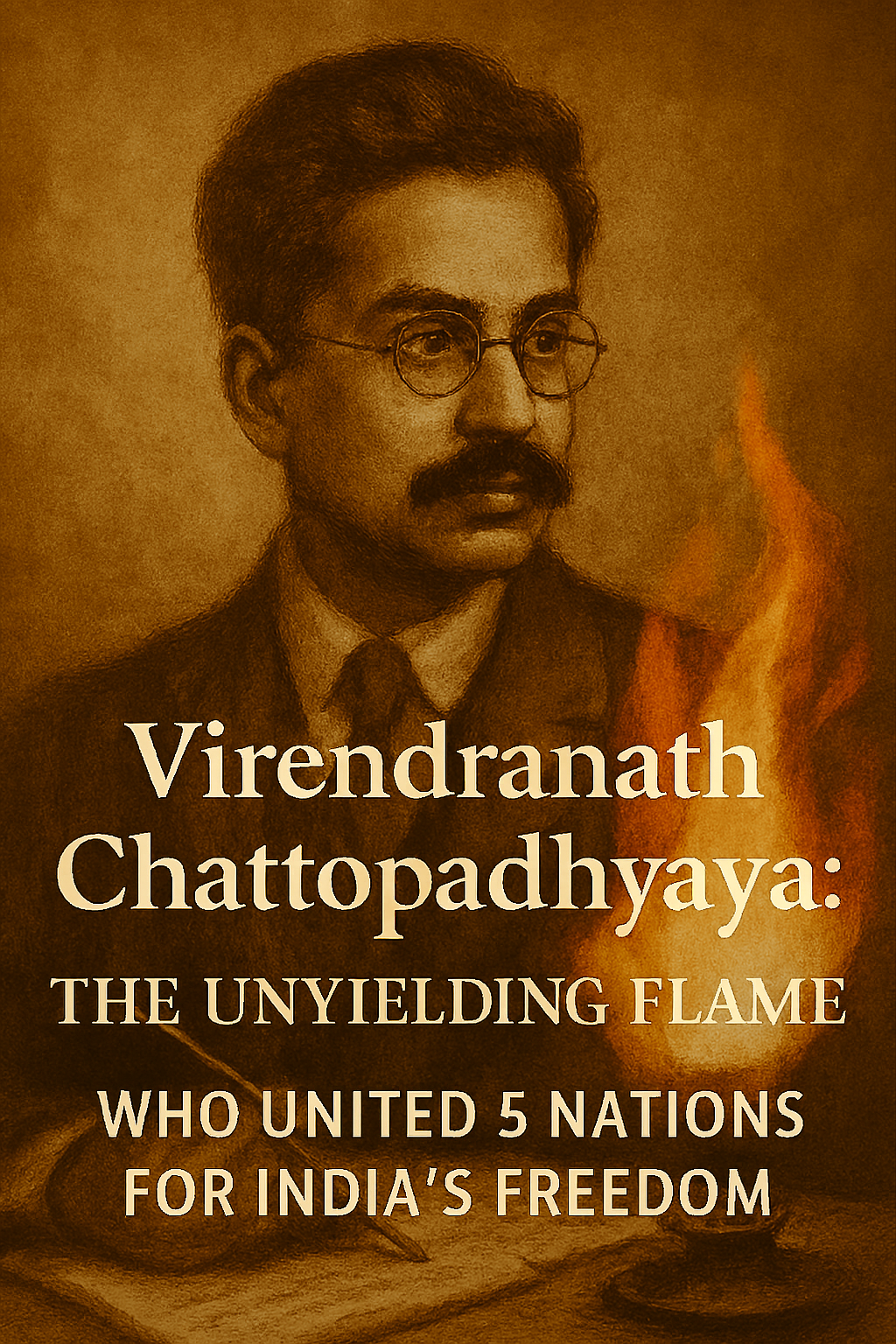
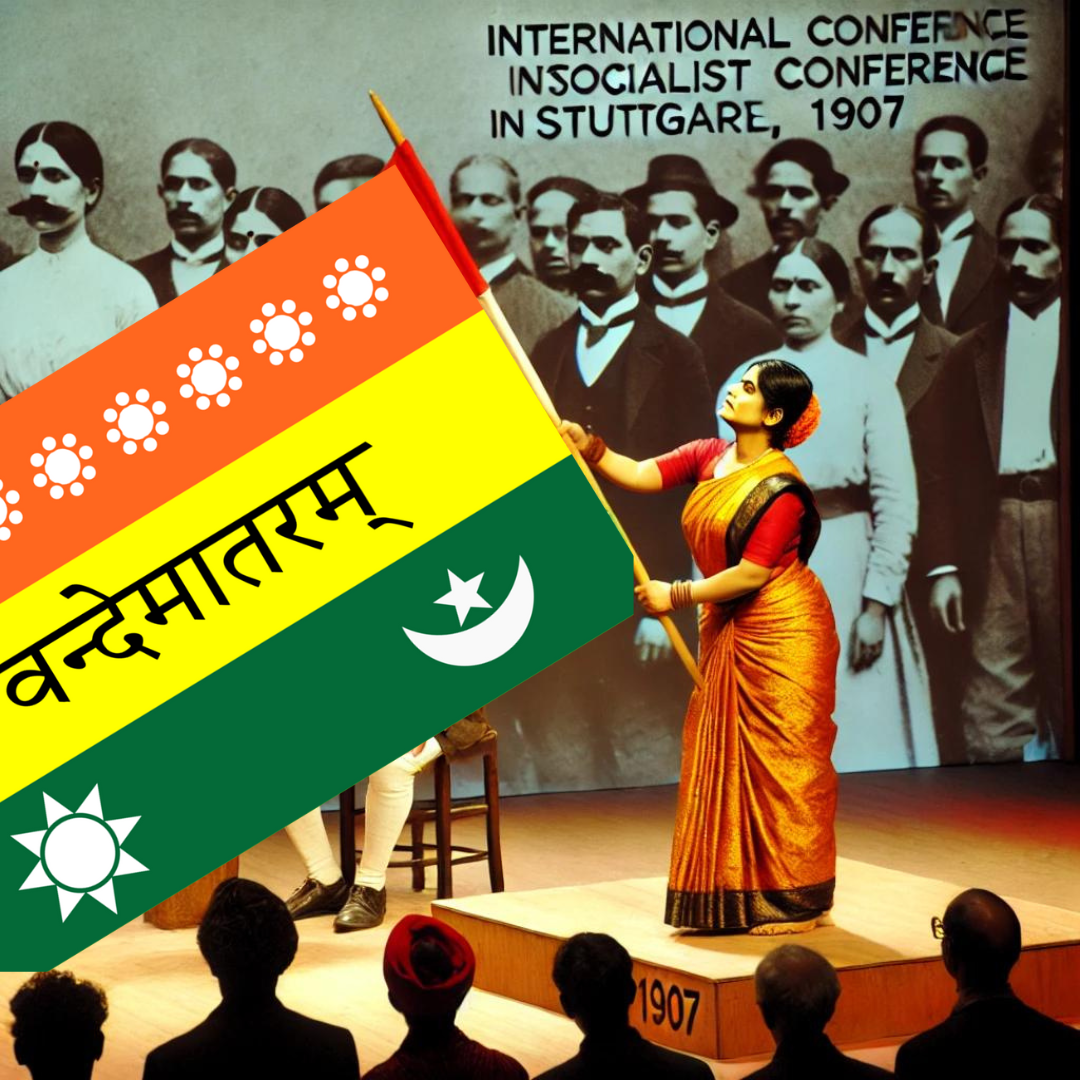
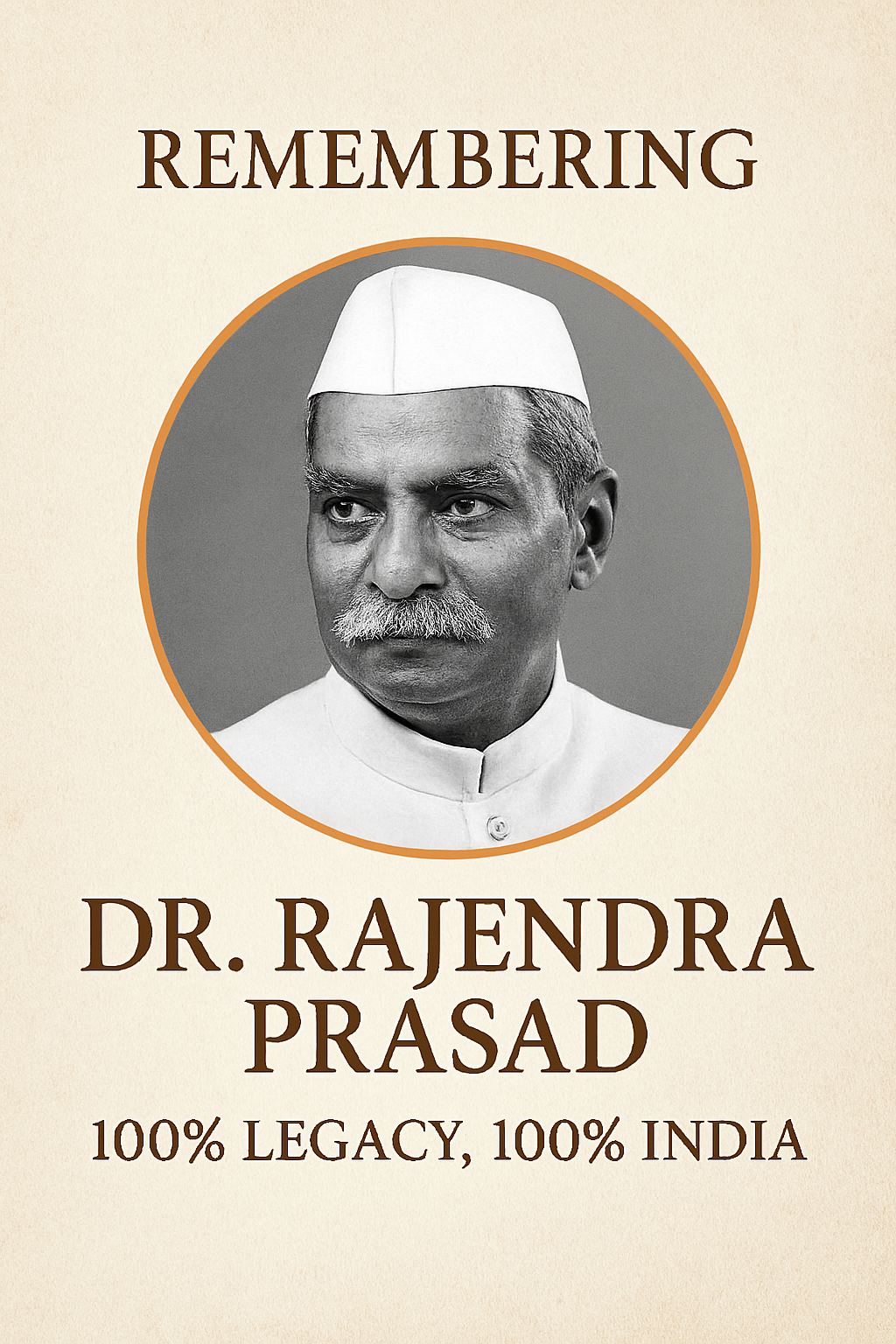
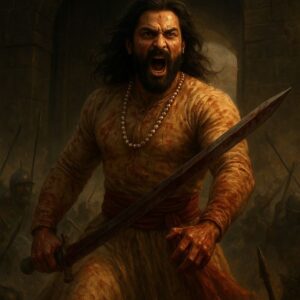
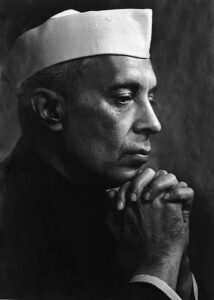
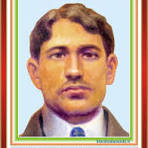
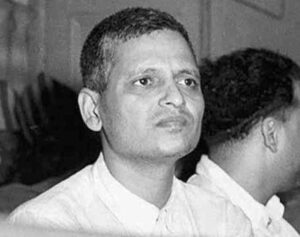
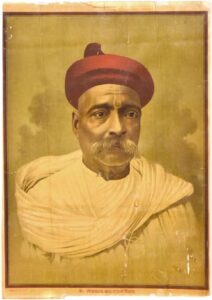
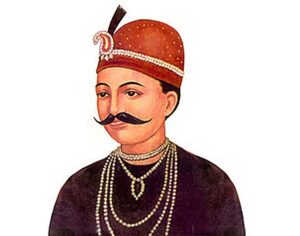
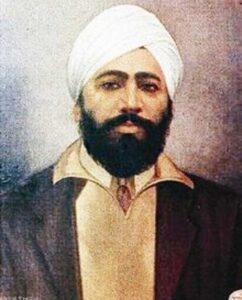
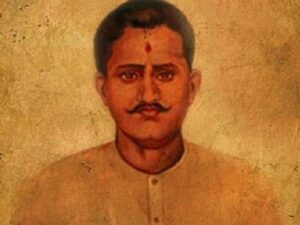
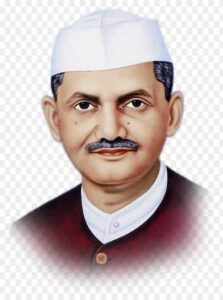
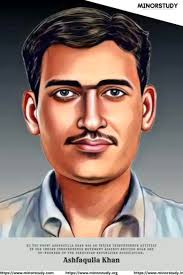
1 comment